How to grow watermelon
Find out how to grow watermelon and pick your own juicy watermelon this summer


Learn how to grow watermelons in your own garden and you'll never have to buy them in the store ever again.
Nothing beats a delicious slice of watermelon on a hot summer's day, except perhaps a slice of fresh watermelon that you picked from your own garden mere minutes before tucking in – it's one of the most indulgent kitchen garden ideas we can think of.
Watermelons are native to Africa and therefore need hot temperatures in order to grow – ideally around 80°F during the day – so learn when to plant watermelon to grow tasty fruits. However even if you don't live an areas that naturally reach those temperatures, you can always grow watermelons in your greenhouse.
Is it hard to grow watermelon? It's surprisingly easy to grow your own watermelon so long as you have the right conditions.
Read on to discover our tips for how to grow watermelon plants in your own garden.
How to grow watermelon from seed
The easiest answer to 'how to grow watermelon' is by seed. There are plenty of different varieties available from tiny icebox varieties that fit in your refrigerator to the delightfully sweet Sangria watermelon which has a sugar content of 12 to 14%.
- The best time to plant your seeds indoors is three to four weeks before the predicted last frost, so long as you can keep them between 75-85°F.
- Fill cell packs or flat seed trays with well draining, loamy compost.
- Create small holes about 1in deep and place one seed per hole. If growing in flat seed trays, place holes about 1 inch apart.
- Germination typically takes between seven and 14 days depending on temperature and growing conditions.
- Once germinated transplant either to the border, placing seedlings about 6in apart. If planting multiple rows, keep the rows at least 4ft apart.
- You can also plant your seedlings into a larger a pot – more on that below.
- 'Don’t tuck plants into the garden until soil temperature is above 70ºF, which typically occurs about the time peonies bloom in northern zones,' advises Sidney Phelps of Bonnie Plants.
- Water regularly, keeping the soil evenly moist until fruit appears, then reduce watering to only when the soil is dry to the touch to ensure you get the sweetest, most flavorful melons. 'Install a soaker hose or drip irrigation for best results,' suggests Sidney.
- It takes between 70 to 90 days from planting the seed to harvesting watermelon fruit.
- Once fruit appears, keep it off the ground (which can cause rot) by placing a bed of straw beneath the melon.
- 'The fruit is ripe and ready to pick about five weeks after the vine flowers. The clues to watch for are a brown tendril closest to the melon with a yellow ground spot,' explains Idelle Fisher, garden blogger at Sandia Seed.

How to grow watermelon directly into the ground
If you want to know how to grow watermelon directly into the ground, then the approach is slightly different. 'Sow seed directly into the garden four weeks after the last frost and when soil is warm,' recommends Idelle Fisher, garden blogger at Sandia Seed.
Design expertise in your inbox – from inspiring decorating ideas and beautiful celebrity homes to practical gardening advice and shopping round-ups.
- When your soil is warm enough (around 70°F in the daytime), rake your border or bed to a fine tilth – you can tell that the soil is ready as it will be crumbly. Then add several inches of aged compost to improve the quality of the soil.
- 'Create mounds of soil 4in apart on center and plant three seeds on top of each at a 1in depth,' advises Idelle Fisher.
- Water well.
- Once germination has occur thin to one plant per mound.
- Water regularly as above.
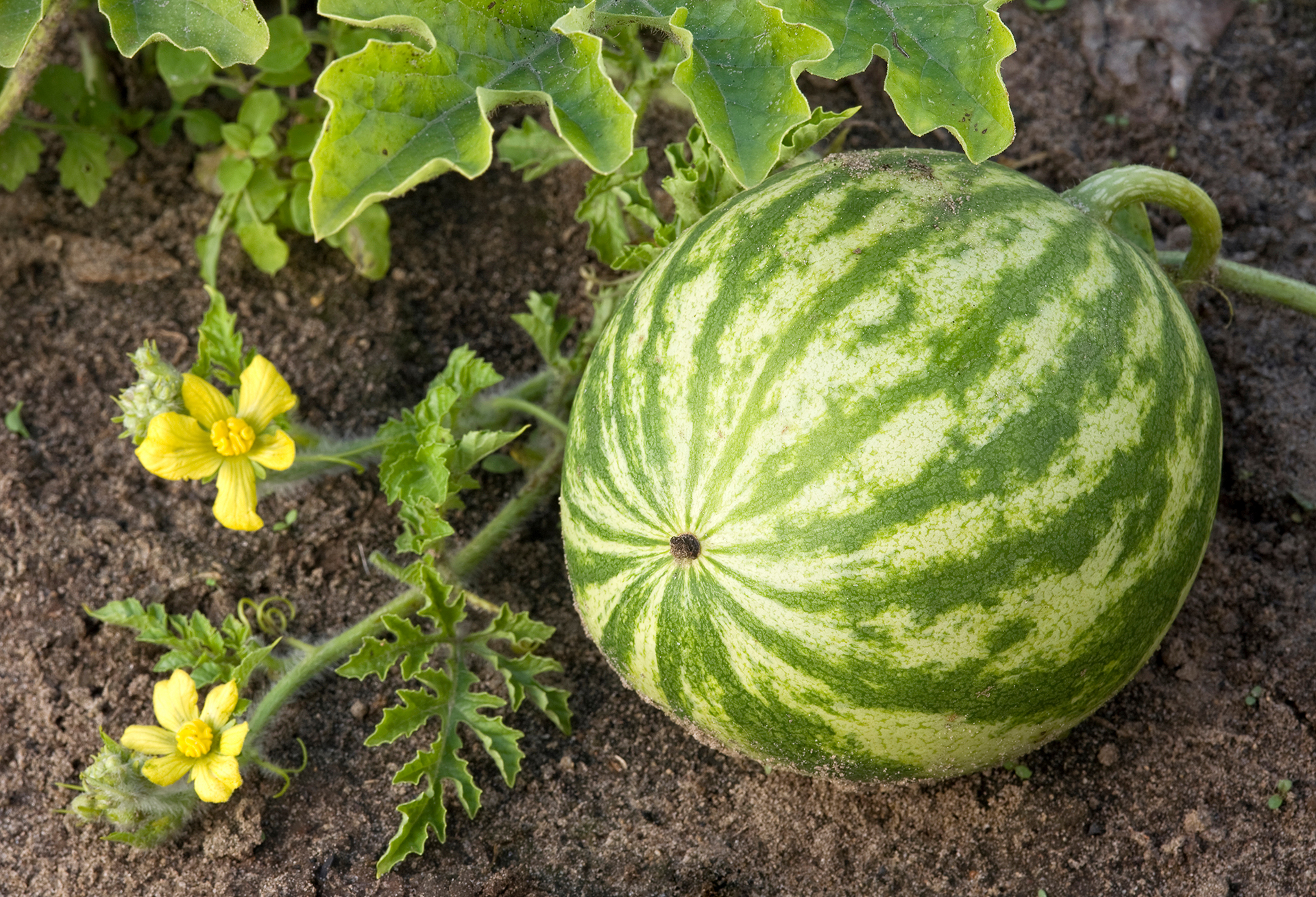
Can you plant seeds from a watermelon?
We're all familiar with the iconic black seeds that are picked out when we're enjoying a delicious slice of watermelon. But, rather than putting them in the bin, you can actually plant these seeds to grow your very own watermelon plant.
If you're wondering how to grow watermelon from these pips, then it's best to wait until spring to do this as you will be able to plant them immediately.
- Simply remove the seeds from the flesh and put to one side.
- Check the seeds are viable by placing in a glass of water and leaving for 15 minutes. If seeds have sunk to the bottom of the glass then they are good to plant. Discard any seeds that have sunk to the bottom of the glass.
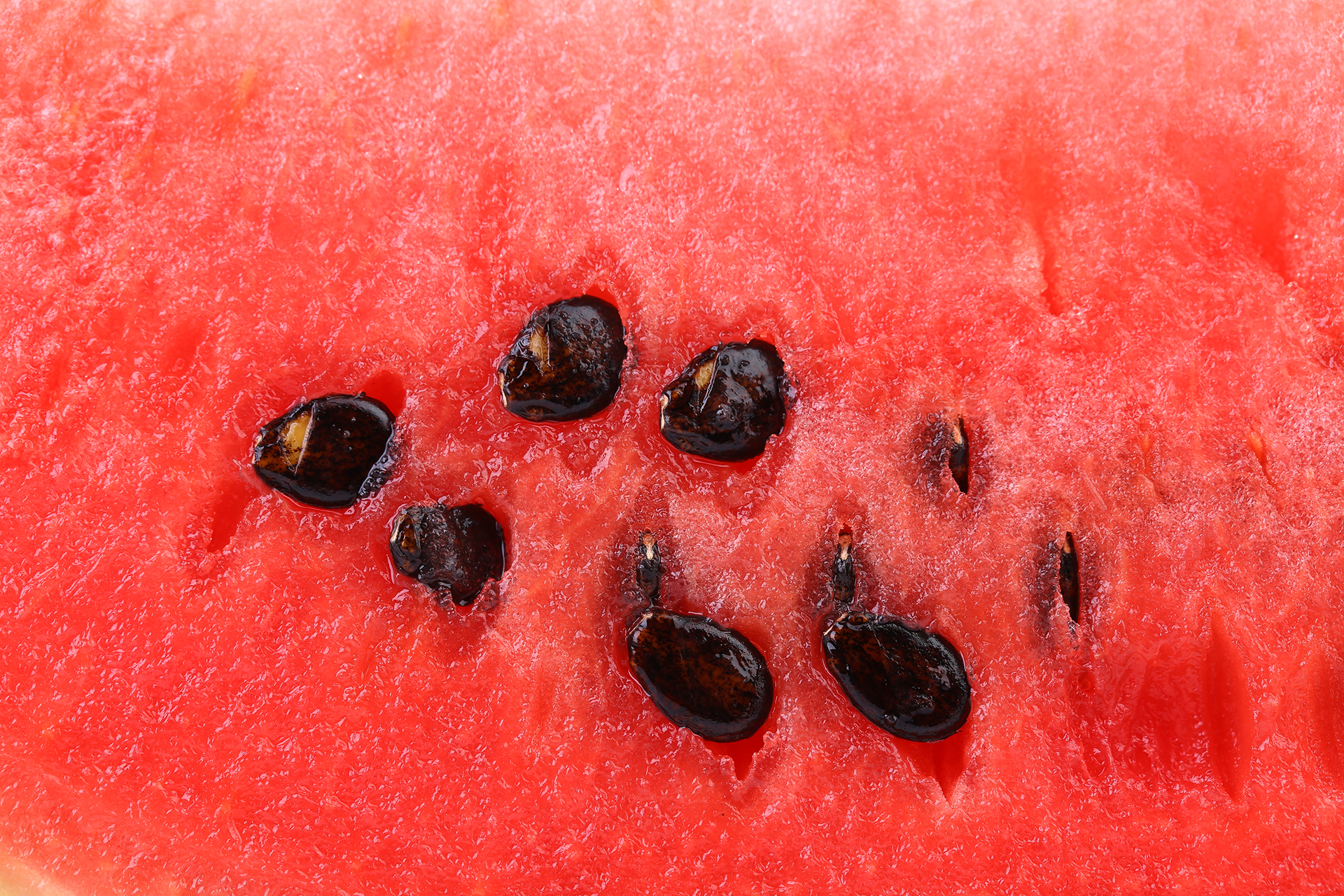
How many years does it take to grow a watermelon?
It only takes one year to grow a watermelon meaning that you will get to harvest the delicious fruit in the same fall after you planted your seeds in the spring.
Do watermelon plants come back every year?
Watermelon plants do not come back every year as they are tender annuals. This means they complete their entire lifecycle in one season and are then killed off by the first frosts. Though this does mean you need to sow watermelon seeds every year, thankfully they are quick growing plus planting new plants each year also reduces the likelihood of disease.
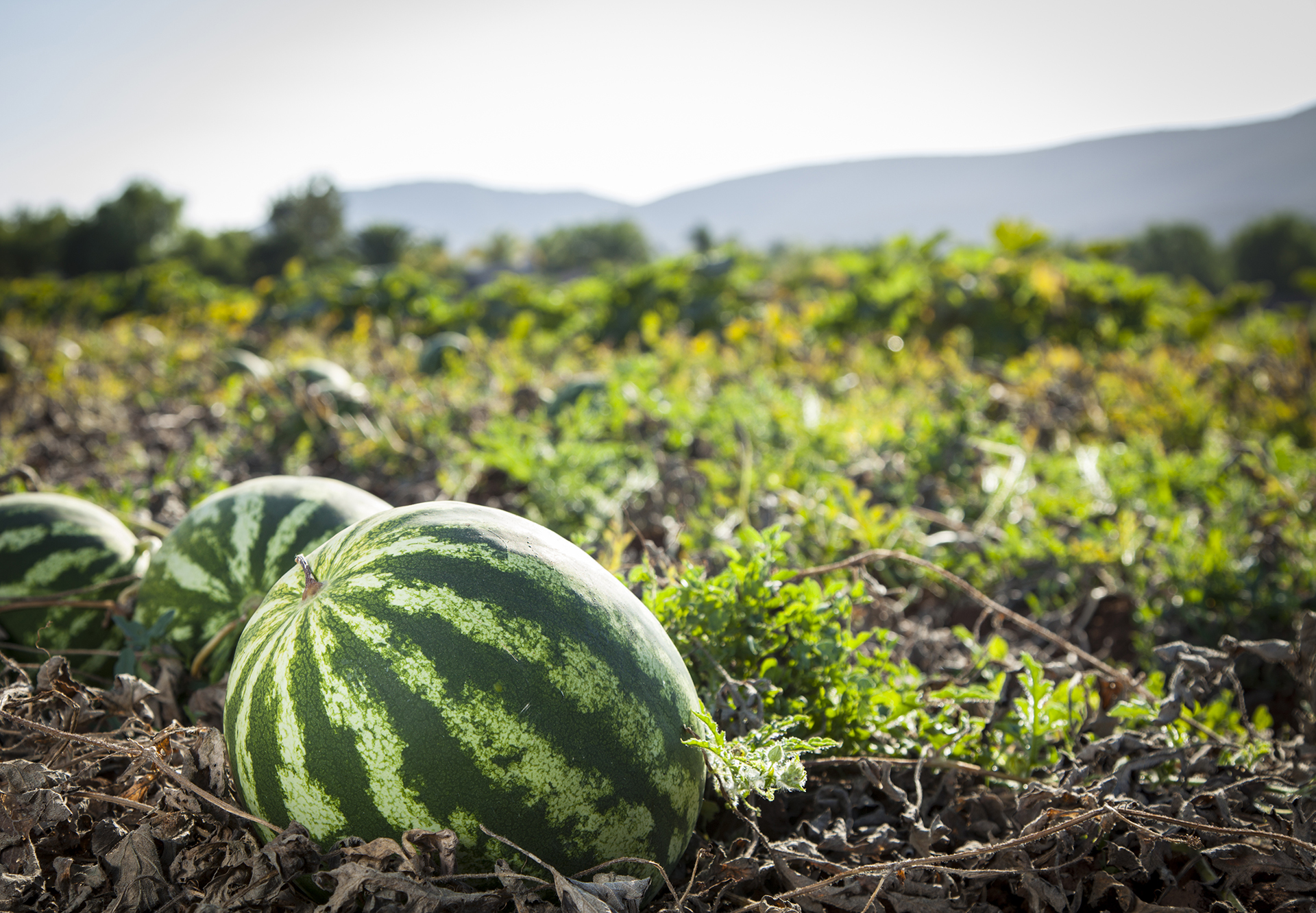
Should I soak watermelon seeds before planting?
No, you should not soak watermelon seeds before planting as it increases the risk of fungal disease and rot. While it is recommended to soak some types of seeds to speed up the germination process, watermelon seeds have a germination period of only one to two weeks which also means there is little benefit to soaking.
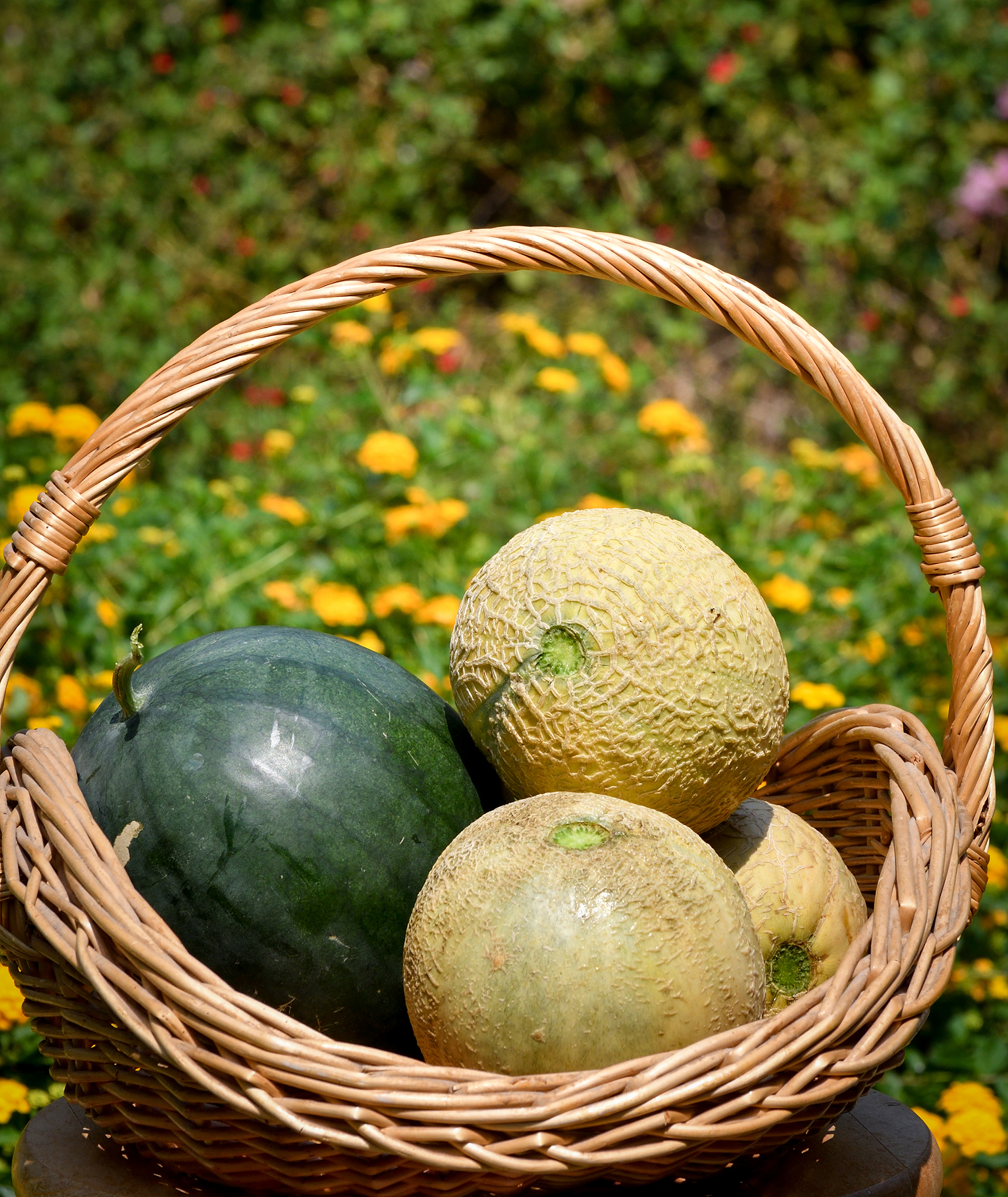
How many watermelons do you get per plant?
You should get between two and four watermelons per plant so it's important to protect your harvest. Lay straw underneath any fruit grown at ground level so that they are protected from the soil, which can cause rot.
'If large critters or animals, such as groundhogs or deer, discover your melons, protect ripening fruits by covering them with laundry baskets weighted down with a few bricks,' advises Sidney Phelps of Bonnie Plants.
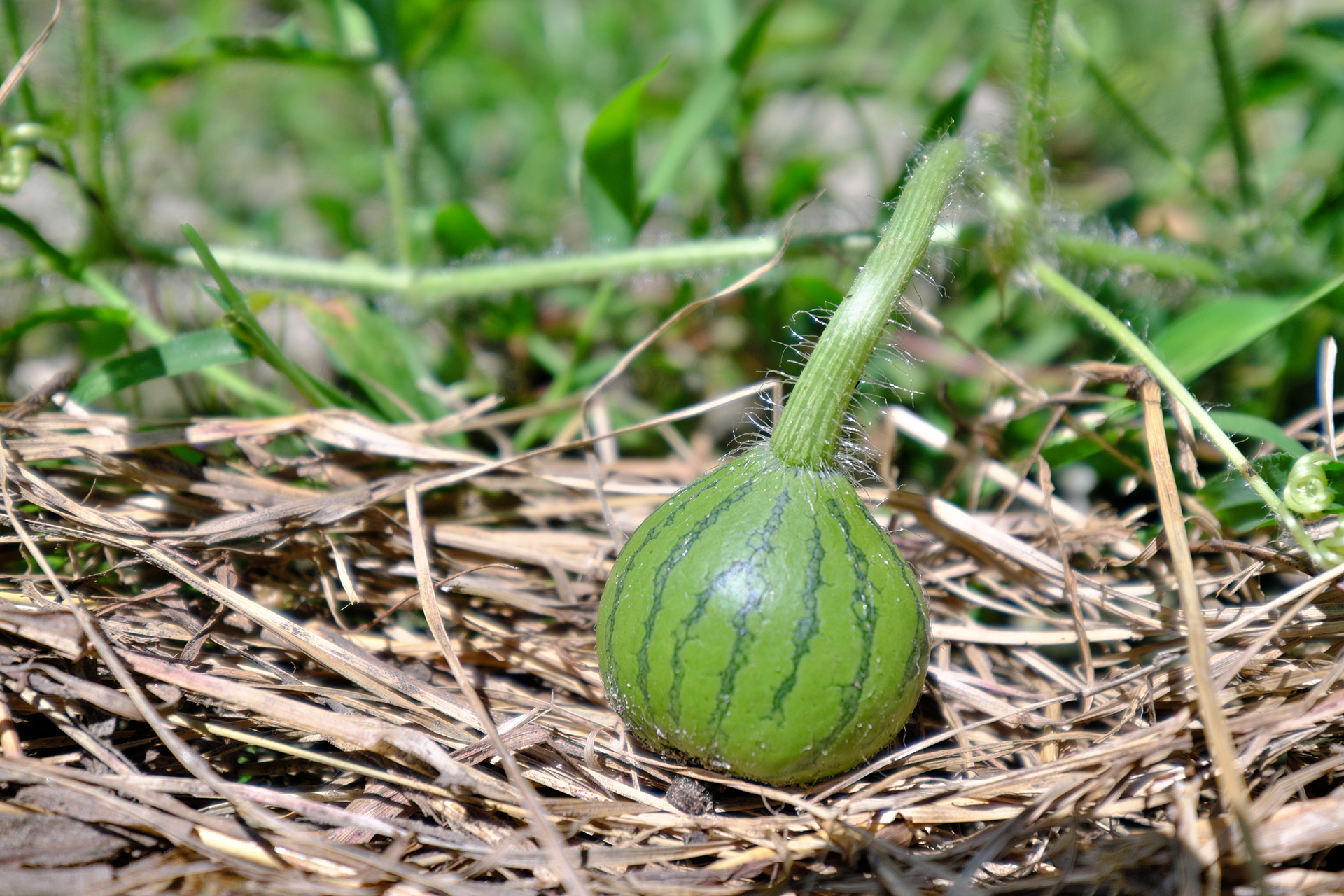
Where should I plant watermelons?
You should plant watermelons in the hottest part of the garden. They are tender plants that need lots of sun and warm conditions to thrive.
'Where growing climates are marginal, black plastic mulch and floating row covers will be extremely helpful,' advises Don McCully owner of Swallowtail Garden Seeds.
If the hottest part of your garden moves throughout the day, consider planting your watermelon plants in a container that you can move in response to the sun.
How to grow watermelon vertically
If you're short on space but still want to harvest your own delicious crop of watermelons, then you'll be glad to know that watermelon make great vertical garden ideas. Growing watermelon vertically is also beneficial for the plant as it improves ventilation and thus productivity.
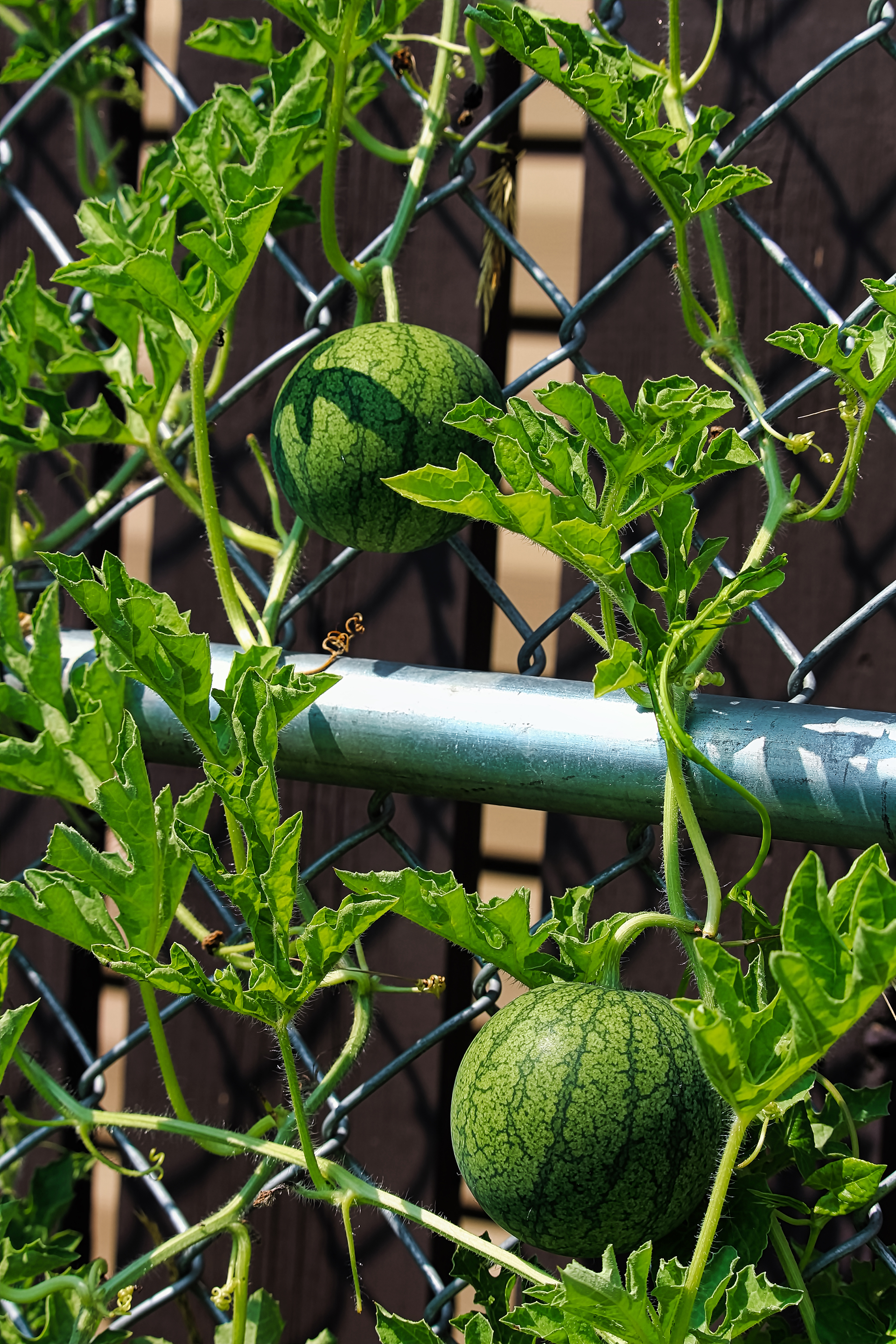
If deciding to grow watermelons vertically, your first question will be 'how tall should a watermelon trellis be?' The answer is that a watermelon trellis should be between 5ft tall for smaller varieties, and around 7ft for larger types. Vegetable garden trellis ideas such as these can vary in style from tepees and A-frames to basic fence trellises, archways or arbors.
The planting process is identical to how you plant the seeds if you are growing watermelons horizontally, except you tie the vines up the trellis rather than letting them snake across the floor. Watermelon vines don't naturally climb so need tying in as they grow.
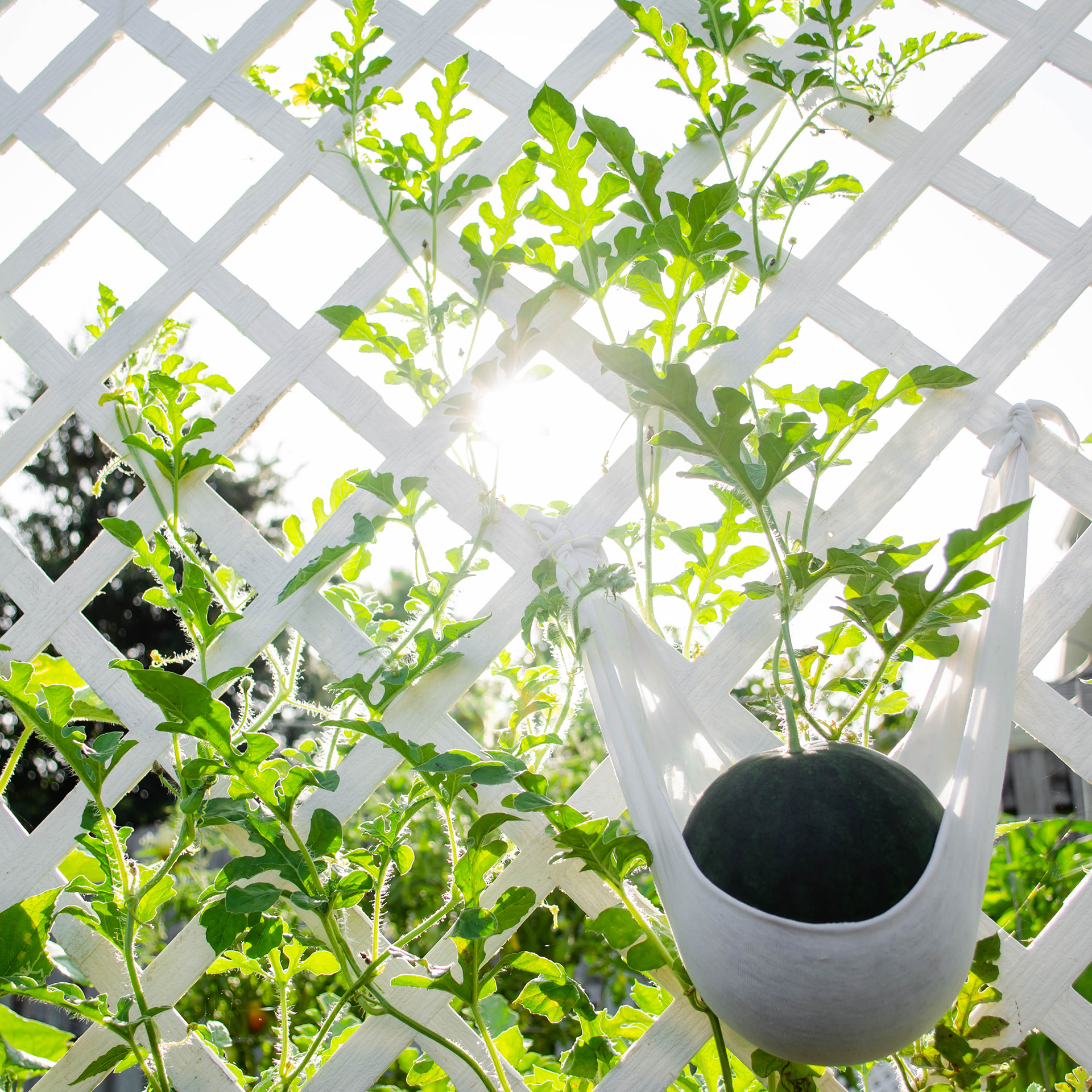
The second major difference occurs once the fruit starts to develop. Anyone who has ever picked up a watermelon knows they are not a light fruit. So when growing vertically, the fruit needs to be cradled to stop it snapping off under its own weight. There are many different ways to create a 'watermelon sling' or 'watermelon hammock' as it is commonly known.
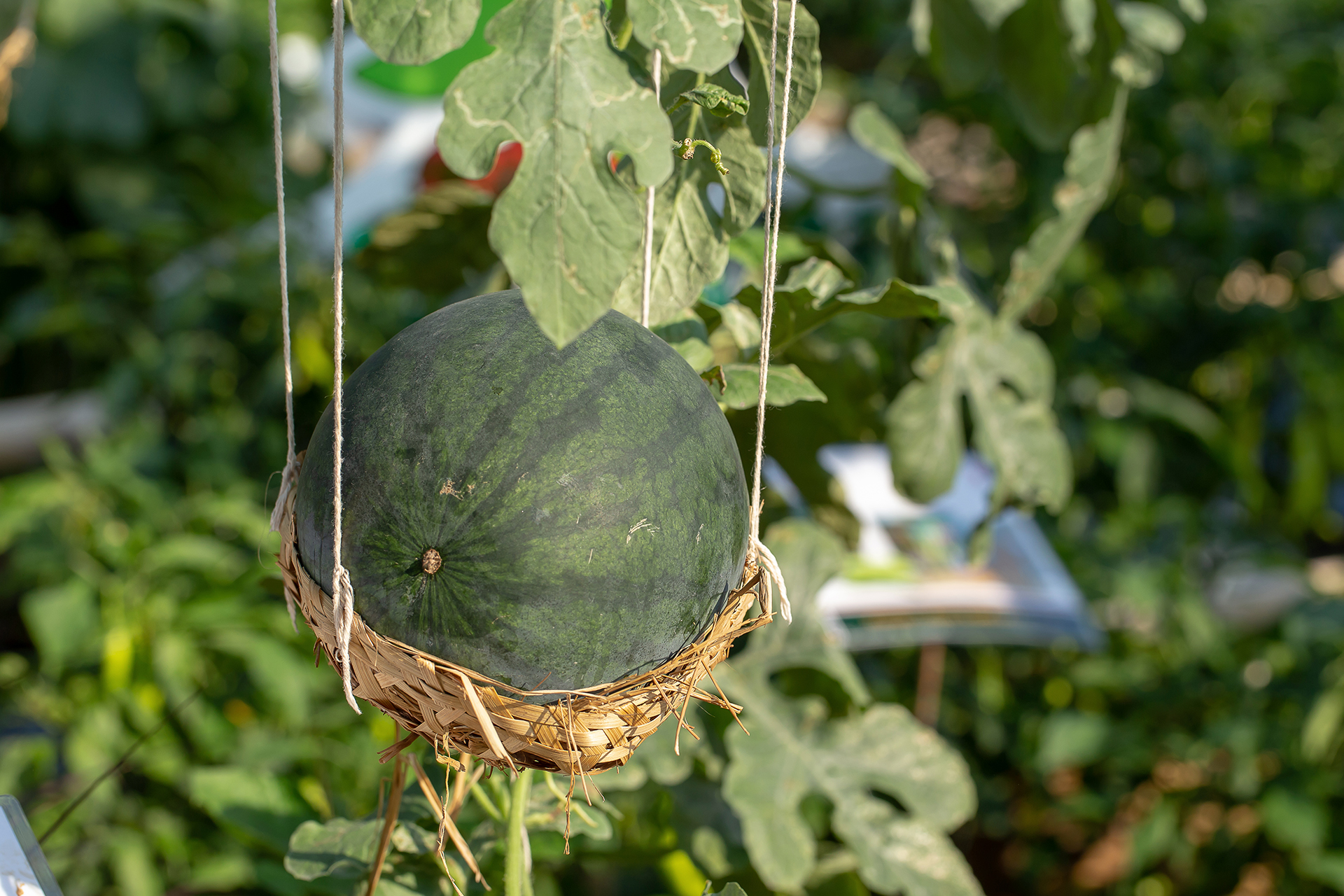
You can put the fruit in new nylon stockings that you can tie to the frame, or you can create a cradle from fabric that you tie to the trellis. Another common option is creating a macramé hammock from string – there are many tutorials available online to show you how. What ever you choose it must be able to let light and air through so that the fruit can continue to ripen.
How to grow watermelon in a planter
If you are looking for vegetable garden container ideas for a small space, you'll be thrilled to learn that you can grow watermelons in planters. Smaller varieties of icebox watermelons, such as Sugar Baby Watermelon, produce fruits that are named for the fact they can fit in the refrigerator. Their small size makes them a great choice for growing in planters or smaller gardens.
When learning how to grow watermelon plants in a planter, picking the right pot is vital. Watermelons don't like to stand in water, so it is vital to select a pot that has good drainage.
The size of your container will determine whether you grow them horizontally – which would be the best option if you have a raised bed – or vertically, which is the easiest option for smaller containers. You can also drape the vines over the side of the pot and let the plant spill out. If you opt for this method, then just be sure that you've got a support or hammock in place for the fruits when they start to get heavy or they will snap off the vines before they are ripe.
If you are living in a colder part of the country, then you can grow your watermelons in a planter in the greenhouse to ensure they receive a warm climate in which they can thrive.
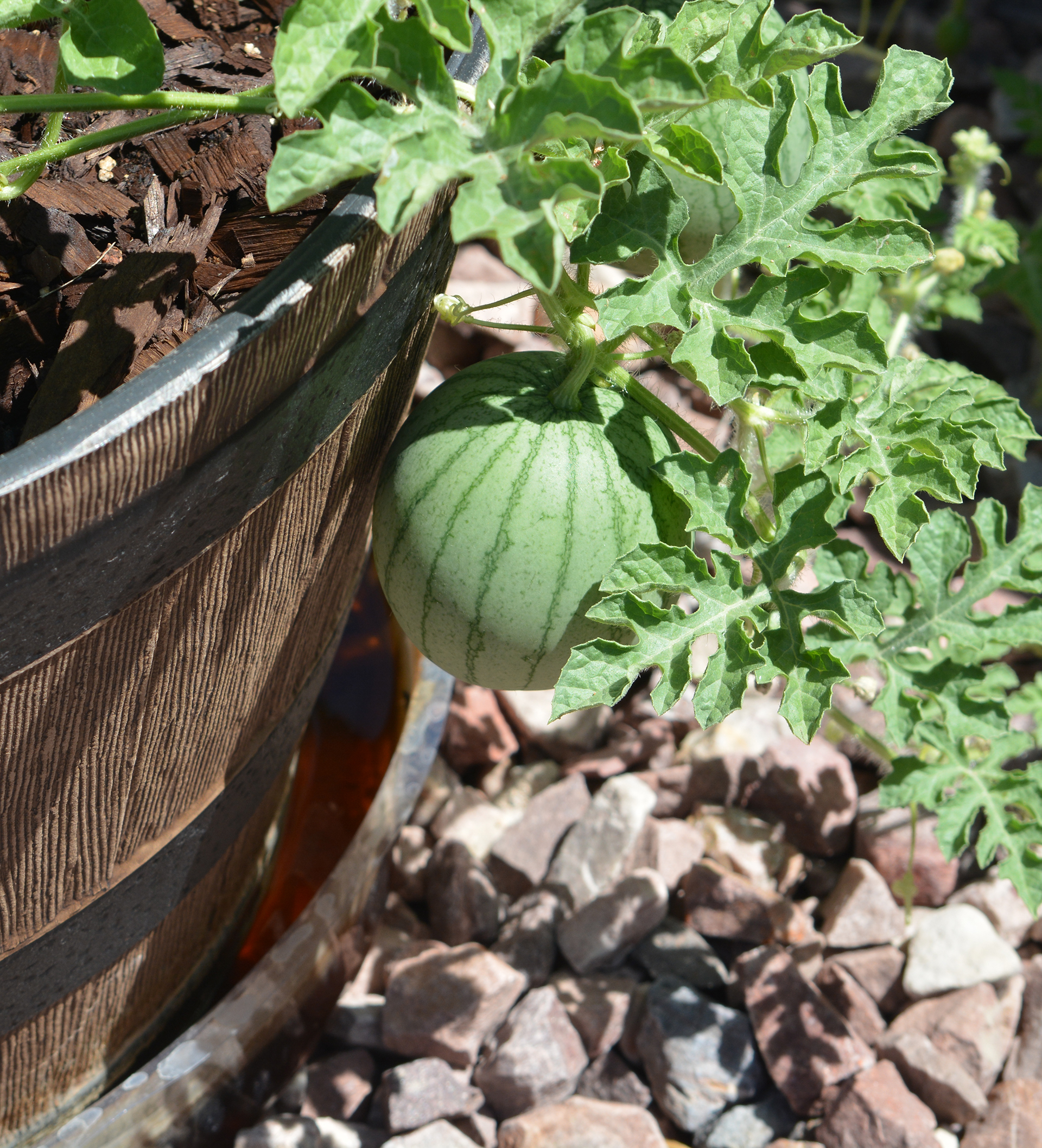
Protecting the seeds
Steven Shirley of Victoriana Nursery Garden advises to protect newly sown watermelon seeds from mice.
'Mice are notorious in "sniffing out" seeds of this nature,' he explains.
You can use a fine mesh pulled tight around the area where you have planted your watermelon seeds in order to protect them from hungry mice.
This feature was created by H&G's sister brand, Period Living magazine
Subscribe to Period Living for more inspirationPeriod Living is the UK's best-selling period homes magazine. A subscription provides you with all you need to know about caring for and improving a traditional house and garden.

Having graduated with a first class degree in English Literature, Holly started her career as a features writer and sub-editor at Period Living magazine, Homes & Gardens' sister title. Working on Period Living brought with it insight into the complexities of owning and caring for period homes, from interior decorating through to choosing the right windows and the challenges of extending. This has led to a passion for traditional interiors, particularly the country-look. Writing for the Homes & Gardens website as a content editor, alongside regular features for Period Living and Country Homes & Interiors magazines, has enabled her to broaden her writing to incorporate her interests in gardening, wildlife and nature.
